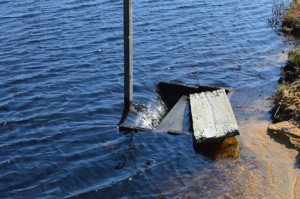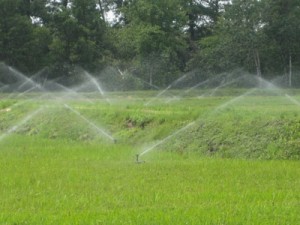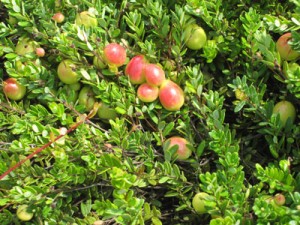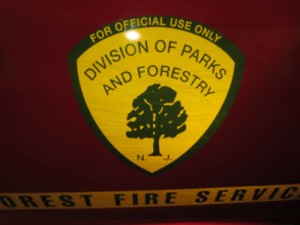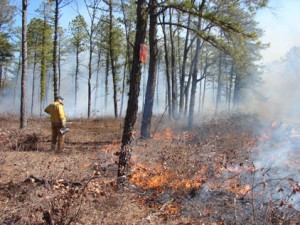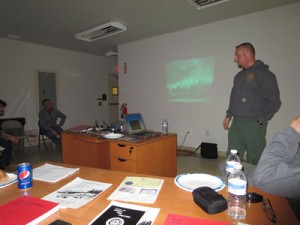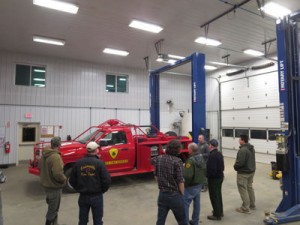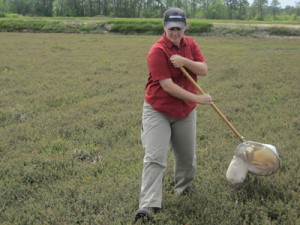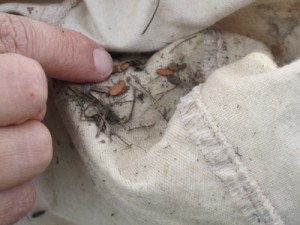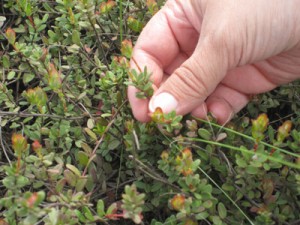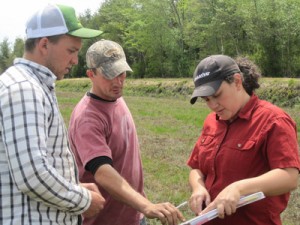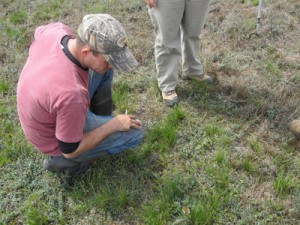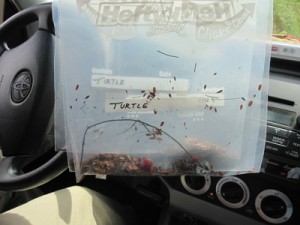It cannot be said enough: the key to growing cranberries is water. Cranberries need about an inch of water each week during the growing season (either via rain or irrigation), preferably early in the morning or at night, in order to avoid losing it to evaporation. We irrigate for two reasons: first, to keep the vines healthy and productive, and second, to protect them from the heat. Keeping them cool helps protect the bloom, the fruit, and the vines themselves. Once the fruit is formed, it’s important to keep them from what we term “scalding”. Scald occurs when the temperature is high but the dew point (humidity) is low; as Dr. Peter Oudemans likes to say, “When people are comfortable, the cranberries are in trouble.”
When humidity is low, applied water will readily evaporate and cool the fruit. During the day, if temperatures get up to around 95 degrees, we will turn on the irrigation in order to cool the bog down to the 80s. We’ll run the pumps for about an hour or two, depending on variables such as wind, temperature, and humidity. There is also a distinct difference between sending water through the root system and keeping the bog cool. The trick is avoiding complications from too much moisture, which can cause conditions that are welcoming to fungi such as phytophthora, which causes root rot. Vines shouldn’t be damp all the time; it’s a balancing act to keep the fruit at optimum growth conditions while avoiding oversaturation. The key to walking the tightrope is constant evaluation and always being aware of bog conditions.
With the use of thermal imaging cameras, our team has been able to use our irrigation systems much more efficiently when cooling down the fruit. “With the camera, we can get a better indication of when we should run the water,” says manager Mike Haines. “Historically, when the temperature got high enough, we would just turn on the sprinklers and let them run for a while. But it wasn’t always necessary. We could get a day that was only in the high 80s but really dry, which means the fruit’s going to get super hot and break down. That can lead to rot. Conversely, it could be 95 out, but the humidity might be high enough to keep fruit cool. Using a thermal camera is helping us pinpoint temperatures precisely so we run the pumps when we need to rather than guessing.”
Regarding the recent heat wave, “I actually think the plants are liking it,” says COO Bryan vonHahmann. “Our reservoirs are lower, and we’ve been irrigating every four days as well as paying closer attention to dry areas, but that’s not indicative of the heat wave.. .that’s just because we haven’t had much rain. As far as the growth is concerned, we’re doing okay.” His main worry in this weather is for our team members. “It certainly impacts our people, but we’re taking precautions and keeping an eye out. We’ve been starting work at 5:30 as opposed to 7:00 and leaving early, and that’s helped a little bit. We’re keeping everyone hydrated and making sure the water coolers are readily available. And as the temperature rises we try to rotate people among tasks that keep them out of the sun and in cooler areas as much as possible.”

